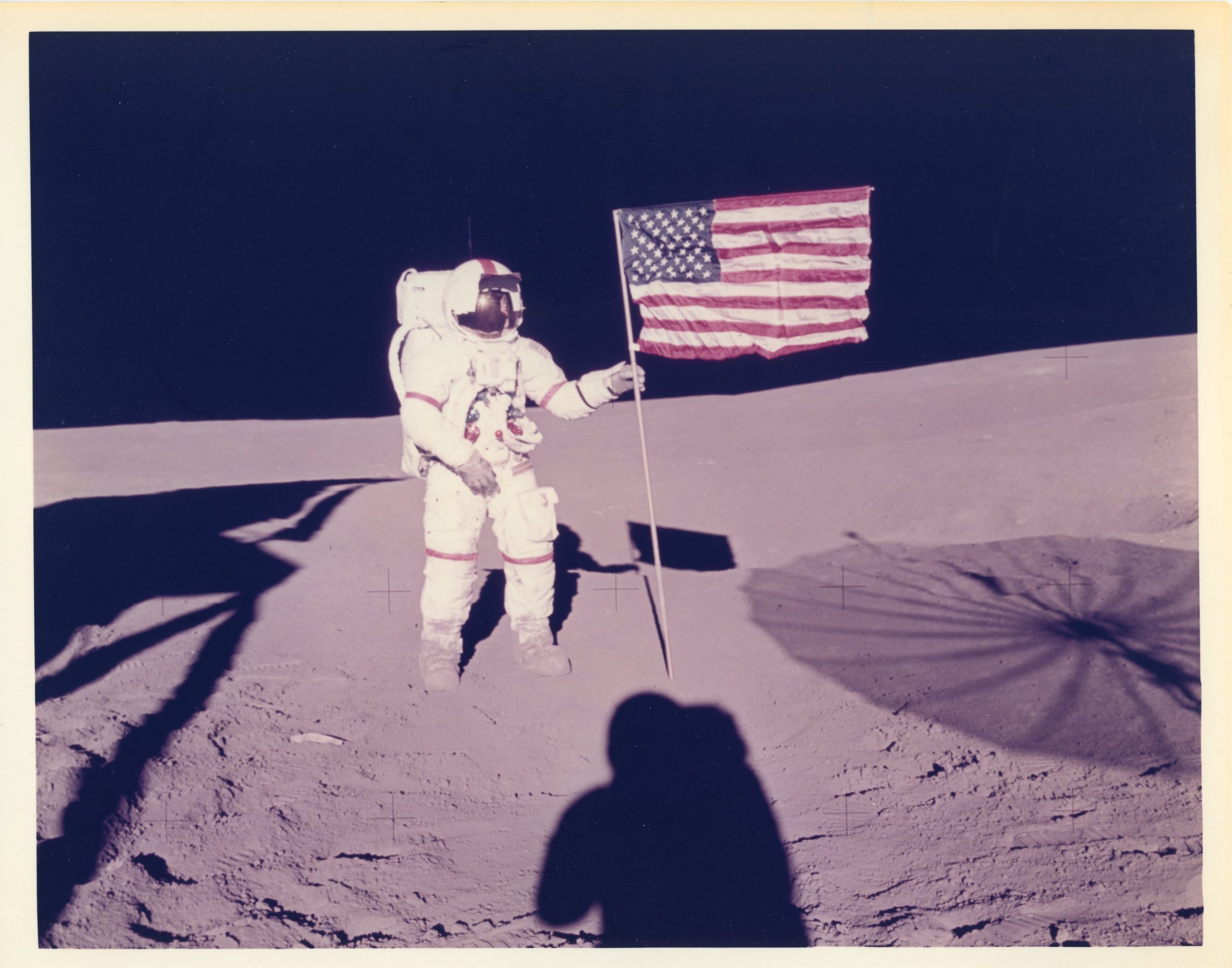This post is part of a series pertaining to SCRC’s current exhibition, Looking Over Our Shoulder: The Cold War in American Culture. The text was borrowed from the exhibition.

NASA Photograph of Astronaut Alan B. Shepard Jr., Commander of Apollo 14 Mission, February 15, 1971. Shepard was the second human to enter space and was the first American to do so. Martin Sedlazek NASA collection, C0293, Box 5, Folder 7, Special Collections Research Center.
One of the most important struggles of the Cold War period was the Space Race, which, boiled down to its essence, was an effort to assert the technological superiority of one nation over the other, with the end goal being to put the first human being on the moon. With mounting tensions from various Cold War incidents of the 1950s, the Space Race became a firm reality when the Soviet Union launched their R-7 intercontinental ballistic missile “Sputnik” into space on October 4, 1957. This first for the planet catalyzed the United States’ urgency to compete with the Soviet Union for domination of space exploration. This led to both the launch of the United States’ own satellite into space and the creation of the National Aeronautics and Space Administration (NASA) in 1958.

Apollo 17 pamphlet, circa 1973. Martin Sedlazek NASA collection, C0293, Box 4, Folder 5, Special Collections Research Center.
Into the 1960s, the U.S. and Soviet Union pushed and pulled for space “firsts.” Though the Soviet Union won the prize for the first human to enter space (and orbit the earth) in 1961, the United States was well on its way with Project Apollo, which eventually resulted in the first lunar landing on July 20, 1969 – a monumental achievement for the United States and a first for the world. Though this meant that the Americans had “won” the Space Race, tensions between the two countries on the frontier of space continued, but with time, fizzled out. The Soviet Union eventually turned their focus from lunar landing to orbital space stations, beginning with their Salyut Program of the 1970s through the 1980s. The U.S. equivalent of Salyut was Skylab, which like Salyut, was not as successful as the lunar landing.

Soviet Salyut 8 Space Station estimated characteristics diagram, 1986. Martin Sedlazek NASA collection, C0293, Box 8, Folder 12, Special Collections Research Center.
Though the Space Race is a thing of the past, its impact on American culture knows no bounds. The Space Race heavily influenced design aesthetics, politics, and the social lives of millions of Americans, and is still considered one of the most important historical periods of the 20th century overall.
Fun fact: Americans, or other individuals trained by NASA, are called astronauts, while those in the same position in the Soviet Union/Russia are called cosmonauts!
Follow SCRC on Social Media and look out for future posts on our Facebook, Instagram, and Twitter accounts. To search the collections held at Special Collections Research Center, go to our website and browse the finding aids by subject or title. You may also e-mail us at speccoll@gmu.edu or call 703-993-2220 if you would like to schedule an appointment, request materials, or if you have questions.

